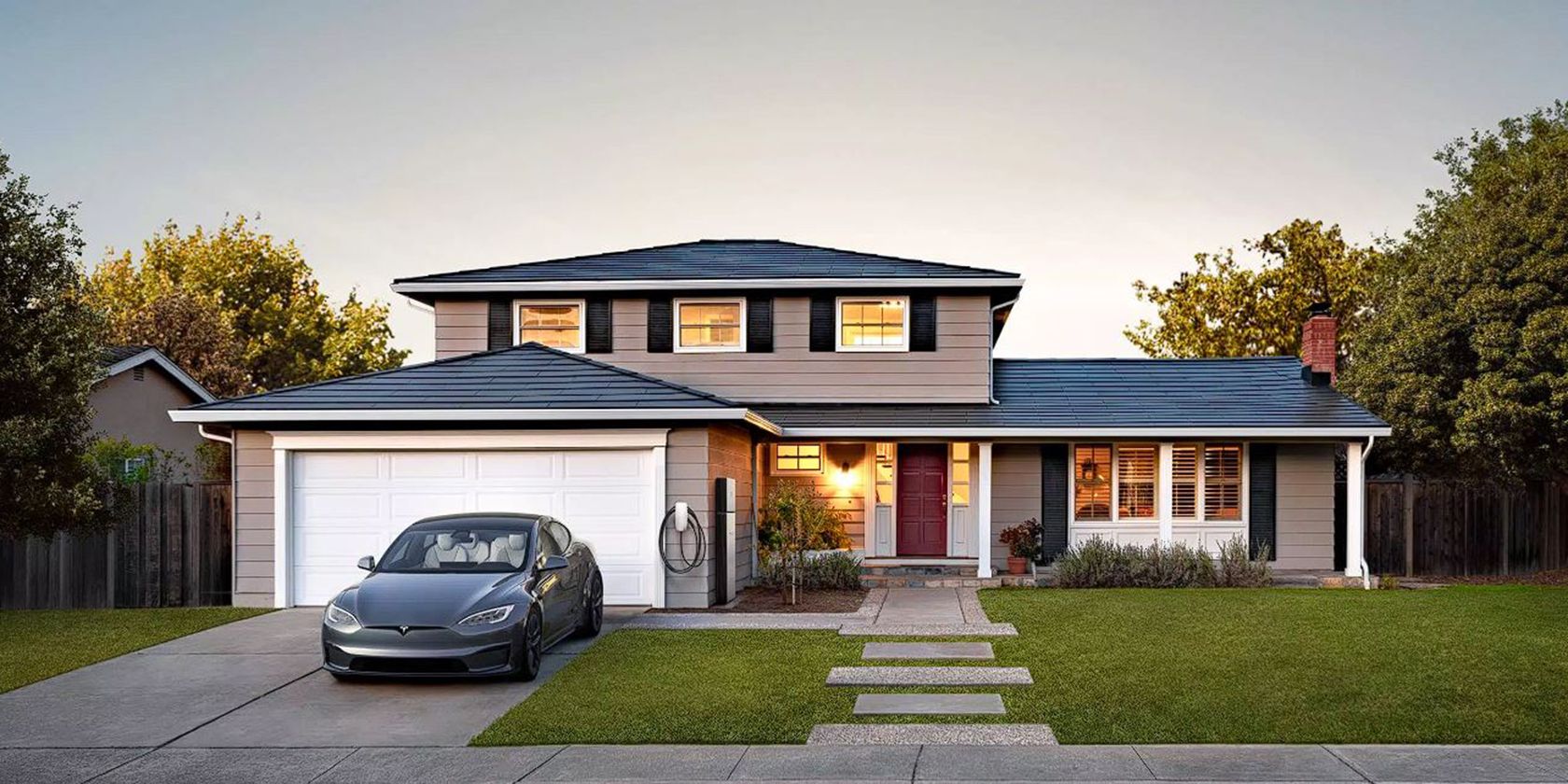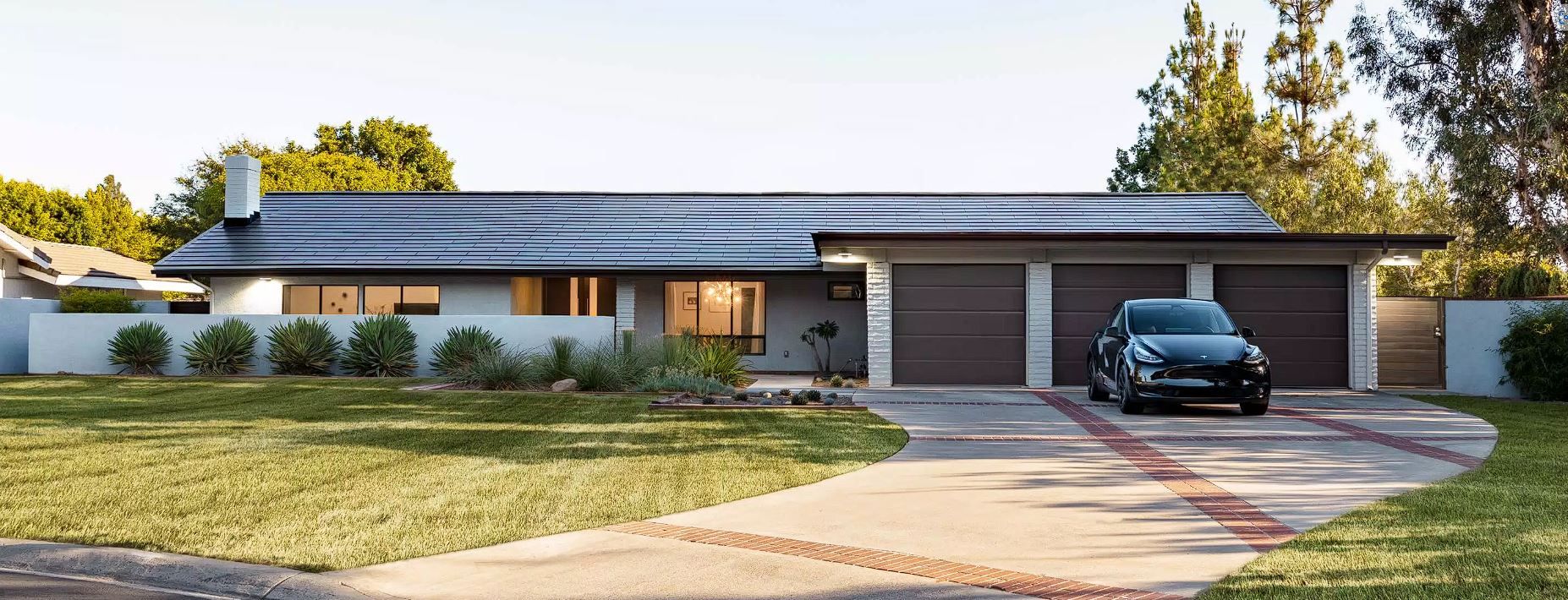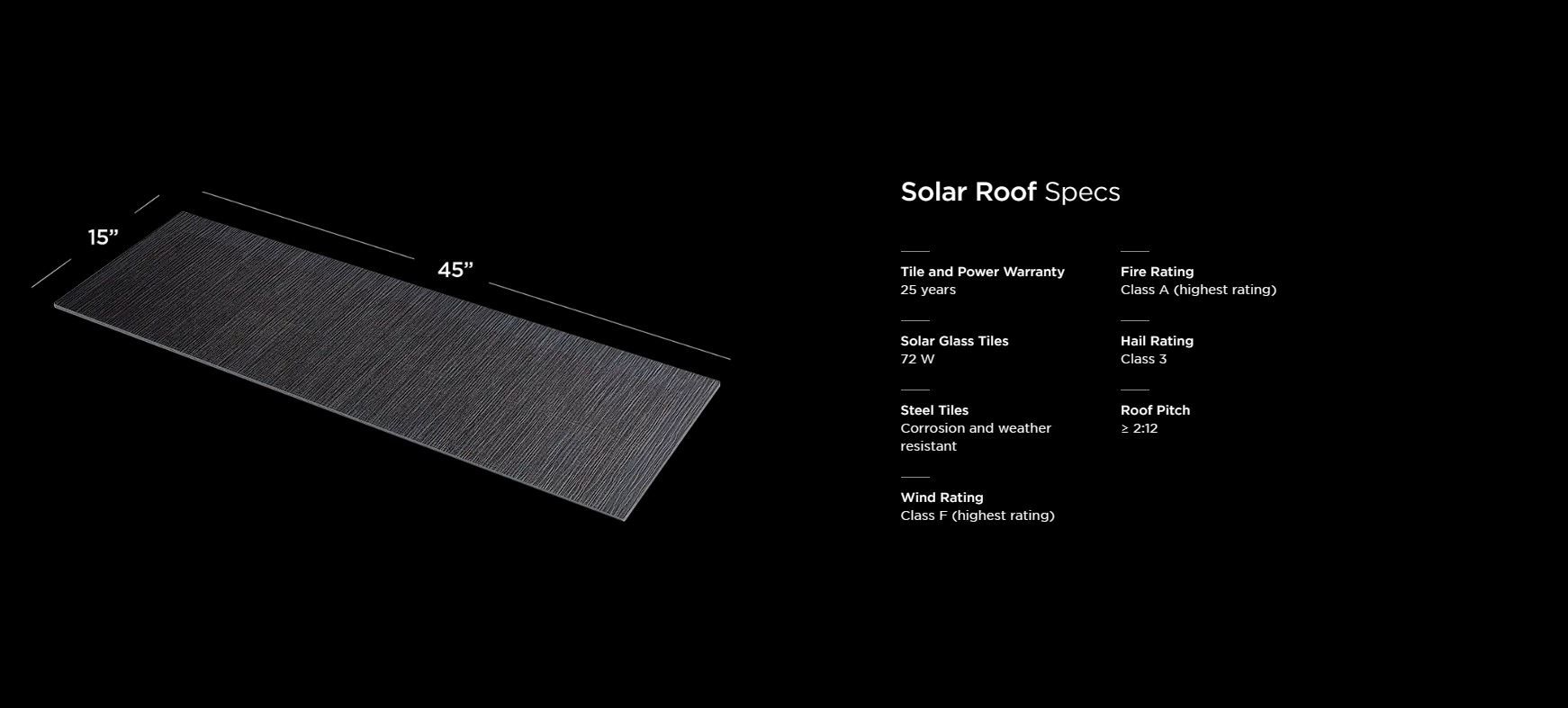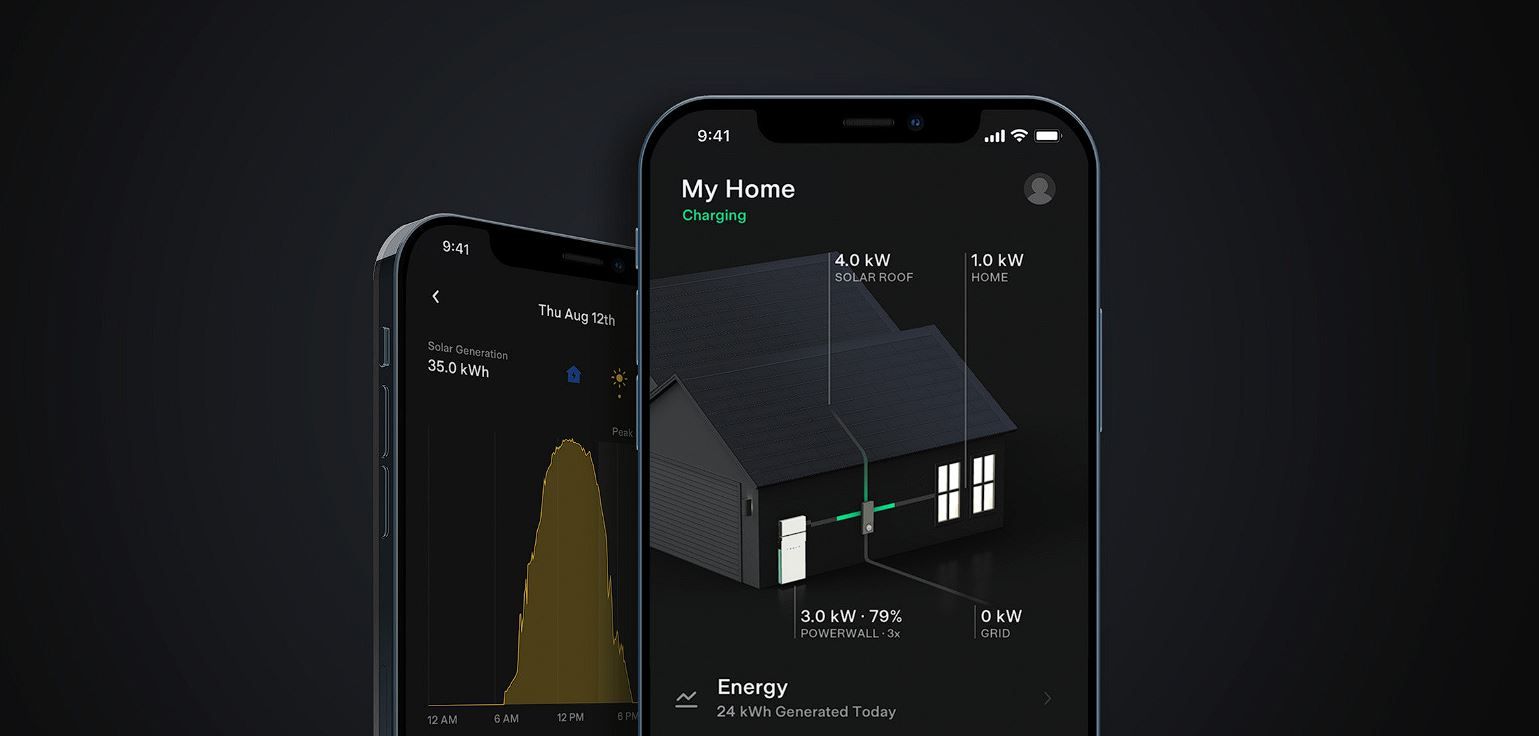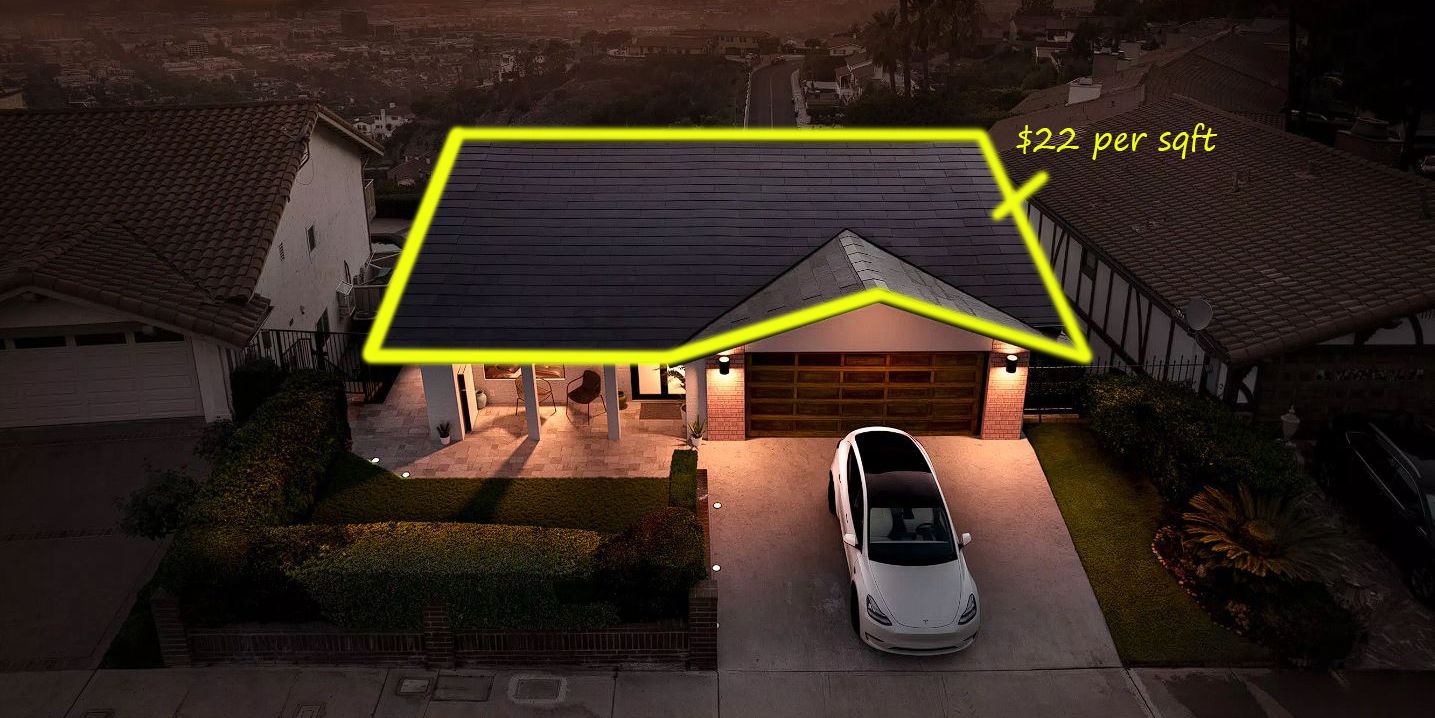The Tesla solar roof was first announced in 2016 by CEO Elon Musk. It is a roofing system that consists of glass tiles embedded with photovoltaic cells, which are used to generate electricity from the energy emitted by the sun.
Courtesy of its sleek design, this results in an aesthetically pleasing yet efficient system that doesn't sacrifice the aesthetic integrity of your home. With additional products that can boost the solar roof's effectiveness, here's everything you need to know about Tesla's Solar Roof.
What Does the Tesla Solar Roof Look Like?
One of the main benefits of the Tesla solar roof is that it is virtually indistinguishable from traditional roofing tiles and shingles that are already present on many homes. Unlike traditional solar panels, which are typically mounted on top of a roof, the Tesla solar roof tiles are designed to look like conventional roof shingles or tiles.
As it seamlessly blends into the roof, homeowners can utilize the energy from the sun, all while retaining the aesthetically pleasing look of their homes. On the contrary, those with traditional solar panels slightly sacrifice the exterior look of their homes as they protrude from the existing roofline.
How Does Tesla's Solar Roof Work?
Tesla's Solar Roof functions no differently than a traditional solar panel, though they run comparatively more efficiently than any traditional solar panel could. In addition, the tiles are extremely durable and long-lasting, courtesy of the glass tile construction made from tempered glass. Due to the material being highly resistant to cracking and breaking, tempered glass is commonly used on cell phone screen protectors.
Furthermore, the photovoltaic cells are designed to withstand even the most extreme weather conditions, such as hail, high winds, and varying temperatures. This is imperative for those that live in areas that experience all types of climates. Best of all, each tile comes with a 25-year warranty, justifying its durability claims.
Keeping track of the regeneration and usage is as easy as navigating the Tesla app. Navigating through the Tesla app allows you to keep track of the regeneration and usage of your household, all while giving you full control and instantaneously alerting you of any disruption.
Do You Need Tesla's Powerwall to Use the Solar Roof?
The Tesla Solar Roof is its own product, but when paired with the right products, it becomes a force to be reckoned with. While the Solar Roof is responsible for the regenerative process, Tesla's Powerwall is responsible for the storage aspect of the solar system. As such, each Solar Roof purchase also includes Tesla's Powerwall to fully take advantage of the system.
Tesla's Powerwall is an integrated battery system that stores solar energy in your household for backup protection when a power outage occurs. Since the Powerwall has an integrated solar inverter, once the system detects a disturbance in your power supply, it will automatically kick in to keep your appliances running. This differs from Tesla's Solar Inverter, which serves as a middle ground for the energy obtained through your roof when using traditional solar panels.
Both available Powerwall models (Powerwall 2 & Powerwall+) have an energy capacity of 12.5kWh, which is highly dependent on how much solar energy can be obtained. As expected, winter months and cloudy days are the least effective, and vice versa. At its peak effectiveness, a singular Powerwall unit can power your home for up to 2.5 days. Multiple Powerwall units can be combined to have a larger reserve capacity, although most will suffice with two units.
How Efficient Is the Tesla Solar Roof?
The Tesla Solar Roof's energy efficiency is what truly separates them from the rest of the units that are available on the market. The photovoltaic cells onboard can convert sunlight into electricity with an efficiency rate of up to 22%, which is significantly higher than the typical efficiency rate of traditional solar panels of 15%.
Each shingle is rated to approximately 72 watts, and courtesy of its small construction, not many are needed to replicate the regenerative capability of a traditional solar panel. As a result, homeowners can generate more electricity with a smaller number of solar tiles, which can help reduce the overall cost of the product. Furthermore, homeowners that utilize solar energy are eligible for a 30% solar tax credit, which effectively increases the monetary value of their homes!
How Much Does the Tesla Solar Roof Cost to Install?
Although the Tesla Solar Roof is advantageous to traditional solar panels, they are significantly more expensive when compared to their counterparts. While the initial investment is larger on the front end, the greater energy efficiency of the Tesla Solar Roof and the simplistic installation process are what truly make the upfront cost worthwhile.
The shingles themselves are cheaper to install per unit at $1.80 per watt, whereas traditional solar panels cost roughly $3 per watt. Despite the cheaper units, it's the installation process that contributes to your larger bill. Removing your existing roof covers a large bulk of the cost at around $6,500. This is all included through the installation process, although this step can be bypassed if you have an adequate roof already.
The other bulk of the cost is the remaining aspects of the installation process, such as the electrical work and permitting. This eliminates the potential headaches and hassles of hiring the appropriate contractors for each job. After everything is all said and done, the cost of a Tesla Solar Roof installation will range anywhere from $30,000 to $60,000, depending on the size of your home.
Tesla's Solar Roof Is Small and Efficient
Evidently, the Tesla Solar Roof is a groundbreaking product that has the potential to revolutionize solar electricity. While it may not be suitable for everyone, it offers a sneak peek of how solar energy may play a role in our lives during the transition to renewable energy.
To help offset the large initial investment, many states and localities offer financial incentives for homeowners who switch to solar energy. With the push for cleaner energy, there are always ways to save! As the cost of battery materials decreases and as battery development progresses, the true potential of solar energy is yet to be discovered.

